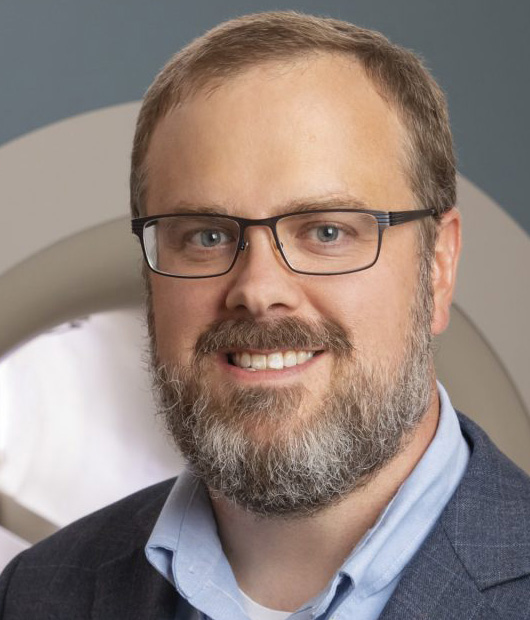When University of Illinois students attend Brad Sutton's class in magnetic resonance imaging this fall, they'll be learning from a professor with hands-on experience.
Sutton recently became an Assistant Professor in the University of Illinois' Bioengineering Department after spending two-and-a-half years as one of three engineers at the Beckman Institute's Biomedical Imaging Center. Sutton said that his time at BIC prepared him well for passing on MRI knowledge to students.
“During your doctoral research you focus on a single problem,” Sutton said. “Coming to BIC, where there's a lot of variety of research, you get to see the broad spectrum and see how what you're doing fits into the big picture.”
Looking at the big picture is why Sutton has found a home as a faculty member at Beckman and the U of I after earning his undergraduate degree in engineering here in 1998. He completed his Master's and Ph.D. at the University of Michigan in the emerging field of biomedical engineering, but returned to Champaign-Urbana when the opportunity arose at BIC. He took that job with an eye toward becoming a professor in the recently-formed Bioengineering Department.
“When I came here to interview for the research scientist position, I talked with Bruce Wheeler, who was the head of Bioengineering at that time, and had that in mind,” Sutton said. “It was an opportunity to come in and see what's going on at BIC and at Beckman, and how I can contribute and how my interests fit in with those of everyone else. I'm glad I did that.”
Not only will Sutton be teaching as a full-time professor for the first time this fall, he'll be doing it at a department that just started accepting students in the fall of 2004. Being part of a new area of study at the U of I is something he's looking forward to.
“The Bioengineering department being brand new, I can only imagine in five to 10 years what it's going to look like,” Sutton said. “There's only a few faculty right now and we are designing curriculum from scratch, trying to think about what a bioengineering undergraduate needs, what a bioengineering graduate program needs to look like. It's exciting.”
At BIC Sutton was the chief engineer for the 3T Allegra headscanner magnet, which has become an indispensable tool for several Beckman psychologists studying brain function. He says his primary focus as a researcher is on neural imaging and trying to improve MRI signal processing.
“It's a slow process and not very well coupled to neural activity,” Sutton said. “So I'm trying to both fix that method and develop new methods to image brain function that are faster, more accurate, and more localized to neuronal activity.”
One current focus for Sutton is dynamic imaging of speech for a project in conjunction with Carle Hospital aimed at aiding surgeons performing cleft palate reconstruction surgery. Whether it's using imaging for medical purposes or to gain a better understanding of cognitive functioning, Sutton feels bioengineering at the U of I and bioimaging at BIC and Beckman will be providing frequent research breakthroughs — and sooner than might be expected.
“Everyone is really working together well and looking at how we can leverage this imaging strength and target certain areas,” he said. “So I think it's going to be exciting. We don't even have to look five years down the road. In the next couple of years, things are really going to take off here.”
